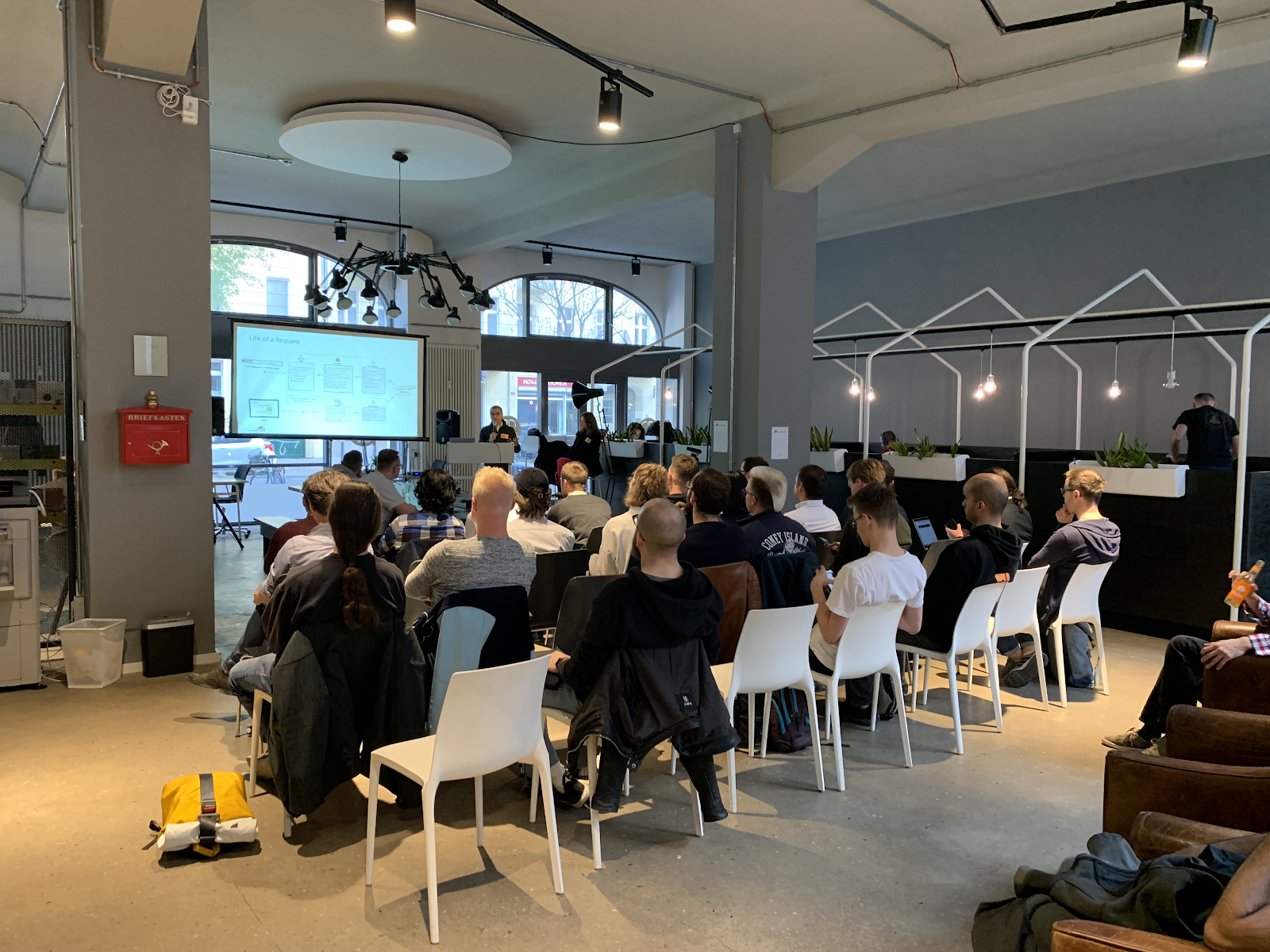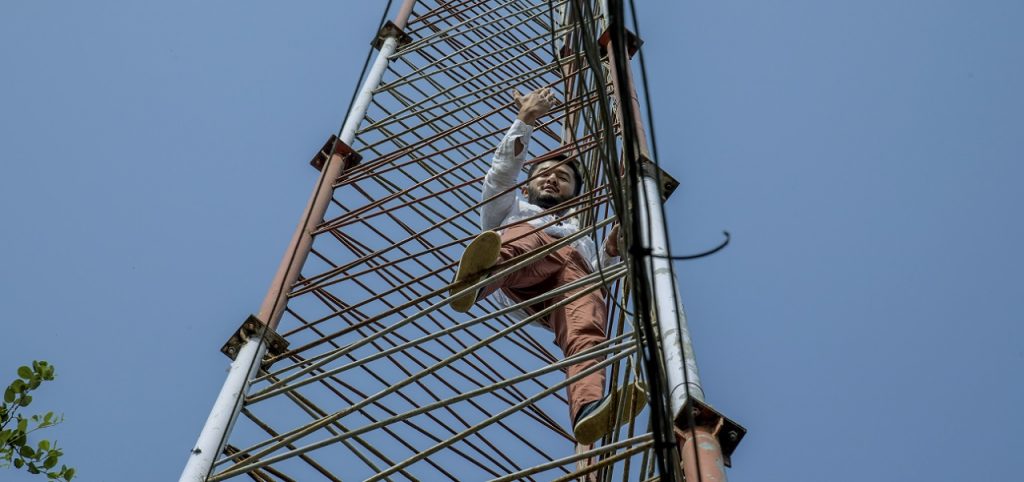Impostor Syndrome and Loser DNA
Most of you are probably already familiar with impostor syndrome. Wikipedia defines it as:
Despite external evidence of their competence, those experiencing this phenomenon remain convinced that they are frauds, and do not deserve all they have achieved. Individuals with impostorism incorrectly attribute their success to luck, or as a result of deceiving others into thinking they are more intelligent than they perceive themselves to be.
Basically, it’s the feeling that you don’t really know how things work and one day you’ll get caught, your lies will be exposed, and the world will come crashing down.
Let me let you in on a secret, all people has likely felt as an impostor at times. Even the people you look up to the most. Lately, there has been a lot of tweets and blog posts on impostor syndrome, and that is great. Raising awareness is the first step. However, not many people are saying what to do about it or how to prevent you from developing a “loser DNA”. What is loser DNA?
My Friend Nick Russo wrote about it after listening to Gary Vaynerchuck. Loser DNA is when you compare yourself to others that are, at least according to you, a lot more advanced Continue reading
Upcoming Events and Webinars (September 2019)
We’re back from the summer break for real - the first autumn 2019 ipSpace.net event takes place today: I’ll talk about the fallacies of distributed computing.
September will be an intensive month:
- We’re starting the autumn 2019 network automation course on September 3rd;
- A week after that (September 10th) I’ll run a day-long VMware NSX workshop in Zurich;
- Azure Networking webinar series is starting on September 12th and continuing on September 24th;
- Lukas Krattiger will talk about service insertion in leaf-and-spine fabrics on September 17th.
Of course, we’ll keep going… our event calendar is fully packed till mid-November. More about that in a month.
HPE’s Paul Miller: Unlike Dell, We Give You Choice
HPE now offers VMware’s full software stack as a service. SDxCentral caught up with Paul Miller,...
How Will Open Source Deal With Success?
“Part of winning is that with great power comes great responsibility,” noted Red Hat CTO Chris...
Sprint Spikes 5G Launch on LA Beach
The 5G network was supposed to launch at the end of July, but Sprint and its vendor partner Nokia...
Check Point Expands CloudGuard to SD-WAN Security
Check Point expanded its CloudGuard portfolio with the launch of two new security suites aimed at...
Cisco Makes CloudCenter Management Tool SaaSy
Cisco’s multi-cloud management tool CloudCenter Suite is now globally available as a...
How Customer Success Managers Advocate for and Engage with Customers

“Hi! My name is Cosmin and I am your Customer Success Manager here at Cloudflare” is how I usually introduce myself and almost always I get met by a blank stare. It could be the name (it’s uncommon, to say the least) but in actual fact, many Customer Success professionals go through the same experience. Could it be that the title doesn’t give away much? What does ‘Customer Success Manager’ actually mean? Is that how they call Customer Support nowadays? And in fact, isn’t everyone in a business responsible for ‘customer success’?
Well let me explain..
Customer Success is a relatively new function that is becoming increasingly popular with XaaS businesses (XaaS stands for Anything as a Service). With any XaaS product, it is no longer the case that you make a significant investment in a perpetual license and are left to figure out how to implement it, how to use it and what else it can do. XaaS businesses operate a subscription model whereby if the product is not actually solving your problem, you can just stop the subscription and move on. Businesses operating a subscription model need to ensure that there is continuous and even increasing Continue reading
Simple Complicated Complexity
In this episode Jordan shares his thoughts on some of the nuanced differences between simple, complicated, and complex network designs. These are terms and descriptions that get thrown around a lot in our industry but do you really understand what they are or how they should impact your design?
Outro Music:
Danger Storm Kevin MacLeod (incompetech.com)
Licensed under Creative Commons: By Attribution 3.0 License
http://creativecommons.org/licenses/by/3.0/
The post Simple Complicated Complexity appeared first on Network Collective.
Animal Innovations in Pet Care Supplements
It has been said over and over that all your pet needs is food, water, a clean environment, and love to be healthy and happy. While that is a nice sentiment, it isn’t exactly true. For years now, people have known that certain chemical and fillers in dog and cat foods are harmful to their pets, but did you know that flea and tick products, pet shampoos, and even dietary supplements that are made for pets made actually make them sick or shorten their lifespan too?
Thankfully, we’ve come a long way with new animal innovations in supplements that we can provide our pets. Just as we’ve learned that natural vitamins and supplements are better for our health and the health of our families, we are now discovering that natural organic supplements and products are better for our pets’ health as well. Keep reading to learn more!
Natural and Organic is Better
Many pet owners notice that after using flea and tick products on their pets, some pets tend to develop rashes, itchy skin, and hair loss. These symptoms have been associated with toxic chemicals in these types of products. Many pets also have severe reactions to pet shampoos Continue reading
The Case for Complementary Local Access Networks by the Community, for the Community

Back in 2010, I conceptualised and started a pilot project to see how we could introduce Internet connectivity to unserved and underserved rural areas. The ICT4D community – along with a number of international organisations – had been talking about how getting people online could transform lives, but most of the solutions appeared to be either top-down or boiler-plated.
My idea was simple – work together with a local partner to find a rural location where getting people online could make a difference, ensure people from the community were trained to operate and maintain the network (rather than being dependent on outsiders), use cheap easy-to-find WiFi equipment (so if things break down, the nearest town would have spares), and then train the community, empowering them to create and use various digital services. Essentially, this was a network for the people, by the people.

Thus was born our award-winning Wireless For Communities (W4C) initiative. We have had a tremendous amount of success with the programme – having deployed and inspired literally hundreds of networks in South Asia and helped connect the most marginalised of communities. This has also become a global programme for the Internet Society Continue reading
REST API 3. Basics cheat sheet (Ansible, Bash, Postman, and Python) for PATCH/PUT using NetBox
Hello my friend,
This is the third and the last article about REST API basics. In the previous articles, you have learned how to collect information and create/delete new entries. Today you will learn how to modify existing entries.

2
3
4
5
retrieval system, or transmitted in any form or by any
means, electronic, mechanical or photocopying, recording,
or otherwise, for commercial purposes without the
prior permission of the author.
Disclaimer
This article is a continuation of the two previous: GET and POST/DELETE. You should start with that to get the full picture.
What are we going to test?
You will learn how to use two requests:
- PATCH for modifying information for existing entries
- PUT for modifying information for existing entries
As you might remember, the interaction with the REST API is described by CRUD model, what stands for Create, Read, Update, and Delete. In this concept, Update operation is represented by PATCH and PUT HTTP methods. Later in this article you will figure out what is the difference between PATCH and PUT. It is significant.
To put the context, we will Continue reading
Updated: Never-Ending Story of IP Fragmentation
In mid 2000s I wrote a number of articles describing various TCP/IP features. Most of them are a bit outdated, so I decided to clean up, update and repost the most interesting ones on ipSpace.net, starting with Never-Ending Story of IP Fragmentation.
The first part of that article is already online, covering MTU basics and drawbacks of IP fragmentation.